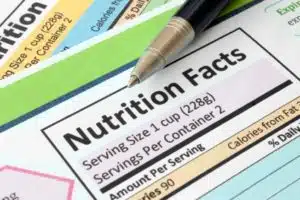
When compared to the labeling of organic foods, the labeling of conventional foods has been lightly regulated by the FDA. But that may all change soon. As of September 2013, proposed legislation plans to allow the FDA to more tightly control how manufacturers to label foods both to communicate and visually present information to consumers.
For years on end, shopping for healthy foods has been a struggle for some consumers due to the confusing labeling on shopping items. New legislation titled, The Food Labeling Modernization Act of 2013 was announced in September 2013 and aims to give the Food and Drug Administration (FDA) more authority when it comes to monitoring food and beverage labeling for conventional foods.
To be clear, “conventional food” items are on the opposite end of the spectrum from organic food items. They are foods that are produced with pesticides, insecticides, fertilizers, or hormones. Conventional foods are the subject of the proposed new labeling requirements.
Under this Act, the FDA would be directed to establish a standard symbol system for front-of-packaging (FOP) labeling on conventional foods. Essentially, the Act aims at giving the consumer more knowledge about the food they’re consuming.
How your labels might change under the Food Labeling Modernization Act:
Front of Package Standards:
- If the principal display panel (PDP) does not include summary nutrition information that mirrors the nutritional value of the food, the food will be deemed as misbranded
- Labeling must use a simple, clear labeling design including calorie and nutrient information
Ingredient Disclosures:
- The PDP must disclose information regarding the use of added color, non-caloric sweeteners, added flavoring, and sugar alcohols on all products. Added color disclosure applies to all products excluding, ice creams, butter, and cheeses.
- Declaration of added sugars per serving statement on the label.
- The percent of daily calories recommended for consumption statements will be added.
- Declaration of caffeine added if the amount is 10mg or over from all sources.
- Ingredient listing formats will be changed for easier reading. Changes include upper and lower case characters, a non-condensed font type, separation of ingredients with bullet points, and higher color contrast between the text and the background.
- More regulations would be put in place on the use of nutrient content claims for cholesterol, saturated, and trans fats.
“Natural” Foods:
- Natural foods are misbranded if they contain any artificial ingredient or coloring, or if they include ingredients that are chemically altered. Examples of such ingredients include high fructose corn syrup, maltodextrin, chemically modified starch, cocoa processed with alkali, or any other artificial ingredient specified by the FDA.
Whole Grain Foods:
- If a product claims that it is “whole grain” or “whole wheat”, the percentage of whole grains or whole wheat must be clearly identified next to the label.
- In order for a product to be deemed as “healthy”, at least half of the grains in the food have to be whole grain.
Single Serving:
- A product that can be consumed on a single occasion will be deemed as a “single-serving”.
The big picture: what these labeling changes mean

Both the FDA and its Center for Food Safety and Nutrition (CFSAN) have identified these new regulations as a top priority and have goals at changing the way that conventional food items are labeled to create smarter and easier shopping experiences for consumers. In their push to create smarter shoppers, the FDA aims to create food labels that are easier to read and understand. Although there is skepticism over whether the bill will actually pass, it will play an important role in proposed FDA regulations that are expected for the coming year.
What do these changes mean for YOU, and how QuickLabel can help
According to the bill, big changes for food labels are in store. Not only will there be added ingredient information, but the formatting for labels will be changed as well. Under the bill, the FDA would be required to offer guidance on requirements to food manufacturers and likewise, manufacturers would be required to provide documentation to the FDA that validates their claims within 90 days of the request.
QuickLabel printers are here to help. With the QL-120X inkjet label printer, labels are printed instantly and label changes can be made easily through our easy-to-use Custom QuickLabel labeling software, allowing you to conveniently change your label designs without having to pre-order entirely new labels for your products. The QL-120X inkjet label printer will not only save you time and energy ordering new labels, but it’s also going to be less expensive than other label printing options.



